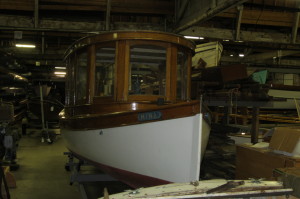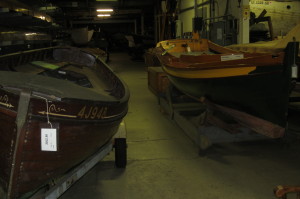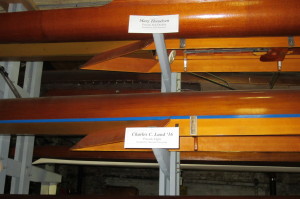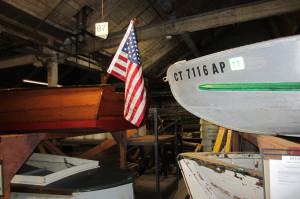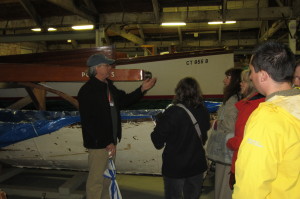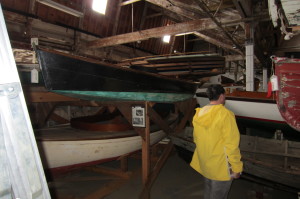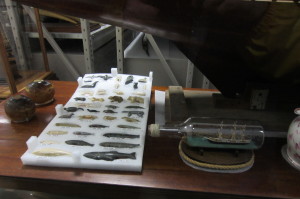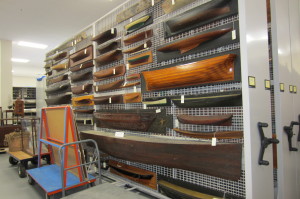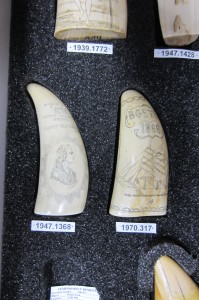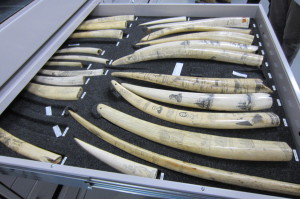It’s a few days late for his birthday, but this interesting page highlights the role of ships in many of Shakespeare’s plays. As the author writes, regarding the pirates who rescue Hamlet in his eponymous play, “Consider that without the intervention of the pirates, Hamlet would have ended up in England with his neck on a chopping block, and Claudius would have reigned unchallenged as King of Denmark.” And here’s a bit about the British sub HMS Shakespeare — plus, of course, the ShipIndex.org entry for ships named Shakespeare. The first links came from gCaptain’s Maritime Monday links for today.
Category Archives: Uncategorized
Giving ShipIndex.org as a Gift
Looking for a last-minute gift for a maritime historian or a genealogist?
Consider access to the nearly 3.4 million citations in ShipIndex.org!
You can give a genealogist three months of access to the premium database for just $22. Or give a historian access to the premium database for six months for $35. Or give a maritime history fanatic access for a year, for just $65! This is a one-time payment, via PayPal (and yes, you can use a credit card through the PayPal site).
To make it happen, send a note to gifts@shipindex.org. We’ll need the following information:
- The recipient’s email address
- When you’d like access to begin, and for how long
We’ll create a pdf certificate that you can print out or email to the recipient. It will include a username and a temporary password, plus information on how to access the database.
This can be a great gift, for any occasion — from a holiday or birthday gift to a retirement or ‘Thank You’ recognition.
38th Voyage training: Visiting the Library and Collections at Mystic Seaport
One of the great treasures of Mystic Seaport is its research collection. Like any museum, they are only able to display a very small portion of their collection at any given time.
I’ve spent a fair bit of time in the library there, both in its old and its new locations, but it’s always great to visit again. I have also often had a chance to visit the CRC, the building where the library, along with hundreds of small boats, and many other special items that can’t be on display, are stored.
Still, I never pass up a chance to visit the place. Here are a few shots of the hundreds and hundreds of boats in the mill:
From there, we went to the collections storage area – ship models galore, paintings, drawers and drawers of scrimshaw, clothes and costumes, nautical instruments, and so much more.
I can’t quite find ways to describe how important these collections, and the work they do, are. There’s so much more to a museum than just the exhibits, and the Seaport’s library, and its excellent staff, are a perfect example of that. Doing research in a collection like this makes it possible for people to learn new insights, discover old truths, and better understand what our ancestors did and why they acted as they did.
But libraries, especially specialized ones like the Seaport’s, generally don’t get a lot of financial support from their institution. Much smaller libraries (the Seaport’s is the largest maritime library in the US, and one of the largest in the world) have even less support, and are even harder pressed to justify their presence or growth of their part of the organization.
I feel certain that there must be ways to better monetize the resources in the research collection. I realize that could sound heretical, and probably sounds terrible. (I admit, “monetize” isn’t the loveliest word – but it is specific and accurate in this case, so I’ll stick with it.) But it is what needs to be done. A library needs to justify its value to the organization by generating revenue. There’s plenty that can be done for researchers that doesn’t involve revenue generation, but there is so much more that can be done for them, as well. And when it creates revenue, it gets attention within the organization, and is seen as a force for growth, rather than a drag on expenses. The fact that something cost money tends to give it greater ‘value’.
I would like to see maritime museum libraries work together to create tools that non-maritime people will want to use, and will want to pay for. I don’t know if it can happen, but if there’s a chance, I’d like to see if I can help make that so.
3 Million Citations! And a full run of Mariner’s Mirror!
Today, I’ve uploaded a file that brings the total number of citations in ShipIndex.org to over 3 million! I’ve learned, as I’ve grown the size of the database, that it gets harder and hard to hit big milestones when you add another set of digits to the citation numbers. Nowadays, adding 100,000 citations is somewhat significant, but I feel like only the rollover in the millions mark (or maybe every half-million) is really worth noting.
The file that’s making the rollover is a very important one, and reflects some changes to data in the database. I’m actually reducing the number of resources in the database, but I think it’s appropriate. I’m not reducing content in any way. Before today, the database contained the following resources, all listed separately:
- Mariner’s Mirror (1970-1979; Vols. 56-65). London: Society for Nautical Research.
- Mariner’s Mirror (1980-1984; Vols. 66-70). London: Society for Nautical Research.
- Mariner’s Mirror (1990-1994; Vols. 76-80). London: Society for Nautical Research.
- Mariner’s Mirror (1995-1999; Vols. 81-85). London: Society for Nautical Research.
- Mariner’s Mirror (2000-2004; Vols. 86-90). London: Society for Nautical Research.
So, the database contained volumes 56-70 and volumes 76-90 of Mariner’s Mirror, the most important journal in maritime history. I’ve now added the missing content – volumes 1-55, and 71-75. And, I’ve put them all into one single ‘resource’, since they really are all the same set. I also standardized how the volume and page numbers appear in each citation. ShipIndex.org now shows ships mentioned in 90 volumes of Mariner’s Mirror. This is valuable stuff.
So, to be clear, I’ve removed five resources from the database, but I’ve kept all of their citations. I put them in a new resource, and then I added new citations to that resource. I’ve added citations for 30 years of Mariner’s Mirror to the database, and not removed any. These 30 years of new content add up to an additional 17,605 citations, getting me over 3 million in the total database.
Now you’ll find just one resource for all of Mariner’s Mirror, which makes a lot more sense:
- Mariner’s Mirror (1911-2004; Vols. 1-90). London: Society for Nautical Research.
Also, THREE MILLION CITATIONS.
New Marketing Paths
I’m putting together a new marketing push these days, which consists of a range of traditional to non-traditional approaches.
The most traditional is a series of ads for ShipIndex.org in several maritime and naval magazines over the next few months: Military History, Power Ships, Sea History (I have been writing a column in Sea History about ‘Maritime History on the Internet’ for many years now), and Naval History. Personally, I like print ads. I know there are reasons why they might not be a great idea, but I like ’em. I may add some online ads, as well, but (despite my previous work with electronic journals) I do love me a good print serial.
I am thinking of doing some ads in genealogy magazines next. Any suggestions on which you think would be most relevant?
The first non-traditional marketing tool is underwriting my local NPR station, WSKG, and I’m writing this now because I heard the first on-air acknowledgement spot earlier today, at the end of “On The Media”, which is a show I very much enjoy. The other spot is at the end of “Wait, Wait, Don’t Tell Me”, which everyone in my family enjoys. I will look forward to see if they have any impact at all. It’s really not that non-traditional, though, is it? I mean, Ancestry.com has been doing it at the national level for a while, and I have heard national underwriting spots for library database companies that individuals can’t even purchase, like EBSCO, ProQuest, and even for Summon, from Serials Solutions. (I’ll admit, hearing the last one was pretty cool.)
The totally non-traditional marketing move is to sponsor collegiate cycling teams. Now, in this case, I expect essentially no financial return from the move, just good karma and psychic positivity. (Plus a cycling jersey with the ShipIndex.org logo on it…) At first, I wanted to sponsor TeamType1, which is now Team Novo Nordisk, but they limit their sponsors to cycling and diabetes products and services. Also, they’re a professional, international cycling team, so I probably couldn’t have afforded it, even if they had accepted me. Then I thought about the local collegiate cycling teams, but the Cornell guy never got back to me, the Ithaca College team seems dormant at the moment, and I wondered why I was thinking about them, and not my alma maters.
The folks on the Carolina Cycling Team know what they’re doing. They put together a great proposal, were quick with the information, plus offered great information about the team and its current status, and were quick and accurate in requesting actual payment. I hope my jersey from them comes soon, and I look forward to keeping an eye on how they’re doing. I’m also going to sponsor the Oberlin College Cycling Club, though they haven’t yet asked for the actual money. I guess I should bug them about that soon. I would gladly sponsor teams at East Carolina University (they’d be especially appropriate, since their institution also subscribes to the database) or Binghamton University (well, SUNY Binghamton, as my wife, the graduate, still calls it). If you know someone there, have them contact me. My research suggested that both are dormant at the moment.
(Since cycling is not an NCAA-approved sport, they don’t have limitations on accepting sponsorship. They also don’t get any [or much] money from their athletic departments, so they need the sponsorships. My wife suggested I try to sponsor rowing teams — at least they’re on the water, after all — but since they’re NCAA sports, they cannot accept any sponsorships. Also, I love cycling, and that’s where I wanted to start.)
So, that’s where ShipIndex.org marketing is going right now. If I’m doing it wrong, tell me how to do it right.
Old Ship Picture Galleries temporarily down – what should ShipIndex do?
I discovered this afternoon that Old Ship Picture Galleries was recently taken down.
A site on the home page says “If you want this site back, e mail darrenmbrown@optusnet.com.au and ask him to stop bombarding with e mails. He seems to take exception to me posting some copyright expired pictures that he has paid someone for. I do this as a hobby for the enjoyment of others and just don’t want to know all this animosity – life’s far too short for that! for god’s sake it’s only a picture of an old ship!”
This site had a ton of great images of old ships, and it’s a shame that the author feels bullied into taking it down, but I do not fault him for doing so.
I don’t know when it will be back; I guess I may take the links out of the ShipIndex.org database, at least for the time being, though I hesitate to do that. I’m trying to decide what to do right now. What are your thoughts?
ShipIndex content in library discovery layers
One of the biggest changes in academic libraries over the past few years has been the development of “discovery layers”: collections of paid, unique data that are pre-indexed and then easily searched by specialized search engines.
For those readers not in the library industry, keep in mind that Google, Bing, Yahoo!, and other search engines cannot crawl through data that is in siloed, subscription database collections. That data is limited only to people and institutions that have paid for access to it. So, a big benefit that libraries have held over Google is offering the content inside these databases. Such databases range from big vendors who gather together (or “aggregate”) content from many different sources – examples include ProQuest, Gale, EBSCO, Project MUSE, and a variety of others – to smaller publishers or content providers who generate unique content that they believe they can offer for sale to individuals or institutions. The drawback, however, has been that it wasn’t easy to find all that data – you had to go to each different silo and search that database to see if there was anything of interest there. And of course, first you had to know that each database (or silo) existed.
For a while librarians used “federated searching”, but it wasn’t a great solution. With a federated search tool (and they are still certainly in use in many libraries), the computer takes your search terms and goes out to search each of the many different databases that you’ve selected, waits for all the search results to come back, and then compiles the results together. In most cases, it’s not a very elegant solution, and it’s easy to see why the speed and simplicity of a Google search became so popular – even when the content wasn’t as good.
Google, of course, doesn’t go out and do a search the moment you type words into its search box; it has already reviewed and ‘indexed’ all of that content, and whatever it has indexed is what will be in the search results it provides to you.
So, library database vendors tried to create solutions that allow libraries to compete with Google in this area. Their strong differentiator is that the data they’re indexing is the subscription-based content, rather than data on the free web, which Google indexes. Examples of these are “EBSCO Discovery Service” from EBSCO, “Primo Central” from Ex Libris, “Summon” from Serials Solutions, a division of ProQuest, “Encore” from Innovative Interfaces, and a few others. (As an aside, I was a co-founder of Serials Solutions; I was involved in the sale of Serials Solutions to ProQuest, and remained with the company for a while after the sale; and was slightly involved with the development of Summon. While I will always have a soft spot in my heart for Summon – to the extent one can have a soft spot for a discovery layer, I suppose – I am today very interested in making sure that ALL institution patrons have access to the ShipIndex.org data, through ALL discovery layers.)
Content from ShipIndex.org is now indexed in Summon and EDS, and I’m looking to get it into other discovery layers, as well. Here’s an example of what search results look like at a library that subscribes to both ShipIndex.org and Summon, from Serials Solutions:
When a student does a search for a ship — in this case the Elizabeth Davidson — they find a citation for that vessel in ShipIndex.org, and a link to take them directly to the page for that ship. They didn’t even need to know that ShipIndex.org exists. They search in Summon (or EDS, Primo Central, or another discovery layer) and they find content that they wouldn’t have otherwise found.
To be clear, a library must subscribe to both a discovery layer and the underlying databases, for the databases’ contents to appear in the discovery layer. Discovery layers are definitely not cheap, but they do make a huge difference in improving how library patrons discover the resources that the library already subscribes to.
I’m pleased that ShipIndex.org’s data is in Summon and EDS, and I look forward to doing whatever I can to make it available to users of other discovery layers, as well.
Watch out for inaccurate citation numbers!
The back-end enhancements mentioned in my last post now allow us to do some significant data improvements.
Over the next few days, I’m going to be doing some work to improve how we represent links into the impressive Ship Register Database provided by the library at Mystic Seaport. Initially, we described this resource as “Ship Register (1857-1900) Database, by G. W. Blunt White Library”. While that gives appropriate credit to Mystic Seaport’s library for creating this incredible database, it doesn’t describe what’s in the database, which is even more important. So we’re splitting out the database’s contents into three sections, reflecting the three publications that are included in this single database.
Those three publications are:
- New-York Marine Register: 1858
- American Lloyds’ Registry of American and Foreign Shipping: 1859, 1861-83
- Record of American and Foreign Shipping: 1871-3, 1875-9, 1881-1900
I did find some discrepancies between what’s listed as being available, and what’s actually available. New-York Marine Register for 1857, for instance, is available on the site, but not searchable by vessel name. The same goes for the 1874 volume of Record of American and Foreign Shipping.
When we’re done, we’ll more accurately represent the sources for this data. However, until then, you may notice a dramatic, but inaccurate, increase in the number of citations in the ShipIndex database. We don’t want to remove any data for those who might be using it during this switch-over, and I decided that duplicate information, in some cases, was preferable to missing information. After we’ve imported all the data that’s linked to the new resources (that is, “New York Marine Register”, “American Lloyds”, etc.), we’ll delete the data listed under the old resource (“Ship Register Database”).
I don’t think it’ll take more than a day or so to get all the new data loaded, and the old data removed, but I’m not completely certain. I’ll add a note to this blog post when that’s complete.
ShipIndex in London
When I went to the ShipIndex mailroom today (OK, the Trumansburg, NY, post office), I found an envelope from England awaiting me. What was it? It’s ten passes to this year’s “Who Do You Think You Are? LIVE” exposition, in London, at the Olympia Exhibit Hall. I’m excited about going to London to exhibit at this show in a few weeks, and now I can share it with my ten closest friends!
Since I know very few people in London (and the one I know the best is leaving the morning of the conference), I’ve got lots of spare passes. Please let me know if you’d like one — they’re worth about £22 each! (It’s an expensive show.)
I’m getting ready for the show here at ShipIndex world headquarters — I’ve set up my dummy exhibit space to see how it’ll all go together, and my son has been weighing and filling bags of 100 bottle openers apiece. I’m hoping I correctly estimate how many postcards, bottle openers, and brochures to bring, and that I’ll have everything I need, especially since I’ll be in a foreign country with funky electricity and strange customs.
I’ll be at stand 311. If you’ll be in the neighborhood, please do come by and say hello. And if you want a pass, let me know.
ShipIndex as a gift
Looking for a last-minute gift for a maritime historian or a genealogist?
Consider a limited-span subscription to ShipIndex.org!
You can give a genealogist three months of access to the premium database for just $25. Or give a historian access to the premium database for six months for $45. Or give a maritime history fanatic access for a year, for just $85! This is a one-time payment, via PayPal (and yes, you can use a credit card through the PayPal site).
To make it happen, send a note to gifts@shipindex.org. We’ll need the following information:
- The recipient’s email address
- When you’d like access to begin, and for how long
We’ll create a pdf certificate that you can print out or email to the recipient. It will include a username and a temporary password, plus information on how to access the database.
This can be a great gift, for any occasion — from a holiday or birthday gift to a retirement or ‘Thank You’ recognition.


